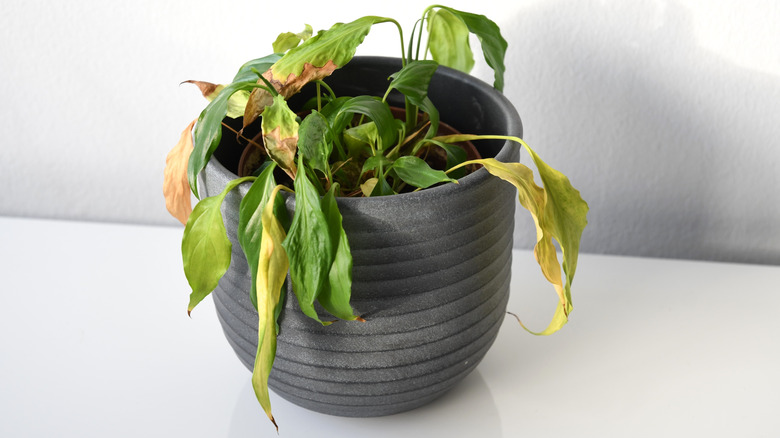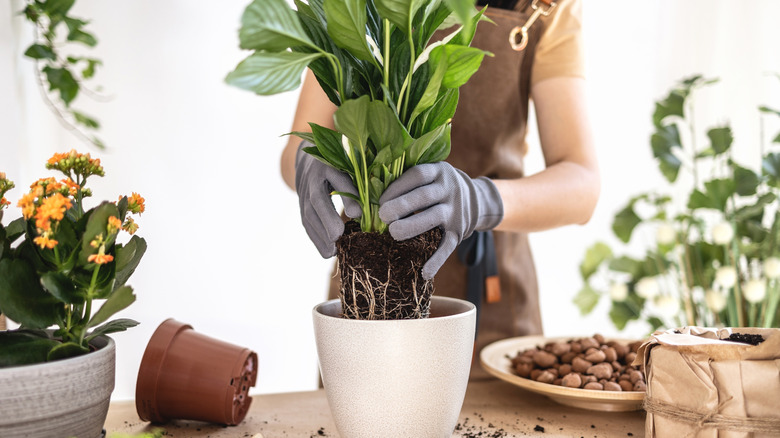The Best Way To Rescue An Overwatered Peace Lily Plant
A common mistake that is sure to kill your peace lily is not giving it enough water. You see the leaves start to wilt and think your plant is thirsty. You water it yet again ... and again and again. However, it's easier than you think to overwater this slightly dramatic houseplant. In a well-meaning attempt to rehydrate your plant, you may actually be drowning it. If you're watering your peace lily too often, the soil becomes waterlogged, reducing the amount of oxygen available for your plant. Root damage can occur, and the plant may struggle to absorb water and nutrients. The excess moisture can also create a breeding ground for fungi that cause root rot. Usually, the best and only way to treat the issue is to repot your plant, after checking the health of the roots.
Whether your peace lily is swimming in water or has developed root rot, you'll likely notice similar above-ground symptoms. Initially, the leaves may start to wilt, with the lower and inner leaves turning yellow. Without intervention, the foliage may appear scorched, drop, and eventually the plant will die. Although these symptoms are also telltale signs you're underwatering your peace lily plant, wet soil is the indicator that these issues are due to overwatering. Stick your finger a couple of inches into the soil. If it feels soggy, it's a good sign the plant is overwatered. Although your peace lily may seem to be barely clinging to life after too much water, it only takes a few simple steps to revive it.
How to rescue your overwatered peace lily
If the soil your peace lily is growing in feels wet, you need to examine the roots for rot. Gently remove your plant from its pot and massage the roots to loosen any clinging dirt. A plant with root rot will have black or brown mushy roots and may smell rancid, while healthy roots will be white or tan and plump. Trim off any diseased roots with sanitized scissors or shears, carefully avoiding the healthy roots. Toss out the old soil and pot, and place your peace lily in a new planter of a suitable size and with lots of drainage holes. Fill the pot up to near the rim with fresh, well-drained soil, applying it carefully but firmly around the plant's roots.
Even if all of the roots look healthy, your peace lily will need some time to bounce back after repotting. Move it to a shadier area while it recovers to encourage the plant to take up less water. Knowing how often you should be watering your peace lily for a healthier houseplant depends on the moistness of the soil. Only add more water when it's dry to the touch, checking it with a finger every few days. Don't let the soil dry out too much. It can shock your plant. Once your peace lily bounces back, relocate it to a spot with bright, filtered light. Moving forward, check the pot's drainage holes for blockages from time to time. You don't want water pooling around the roots. You can also aerate the soil and aid drainage by gently poking it with a bamboo chopstick or similar tool.

